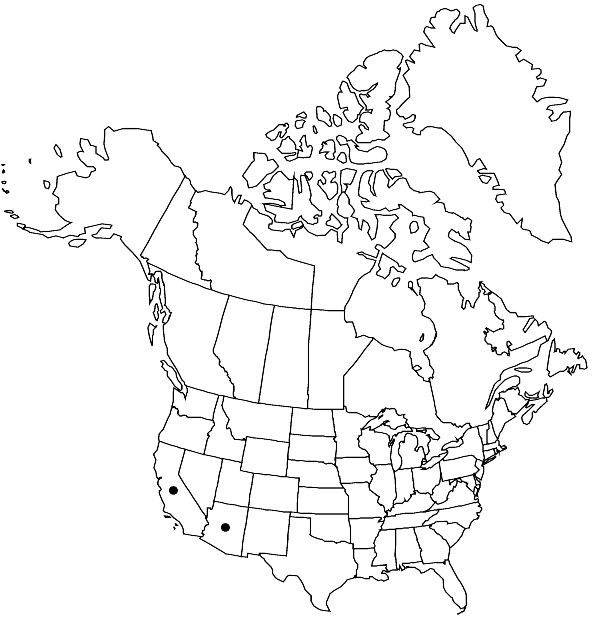Aloina aloides var. ambigua
in A. J. Grout, Moss Fl. N. Amer. 1: 214. 1939,.
Plants to 2.5 mm. Leaves ligulate to lingulate, 1–2.8 mm, margins entire, undifferentiated at base, apex cucullate to nearly open; costa subpercurrent to percurrent, filaments of 3–6 cells, cells subspheric; cells of leaf base 15–64 µm, medial and distal cells 11–24 µm, occasionally with large solid papillae at leaf tip. Sexual condition dioicous or rhizoautoicous. Seta 5.5–12.5 mm. Capsule urn cylindric, 1.5–3 mm; operculum campanulate, 1–1.4 mm; peristome 600–1200 µm, strongly twisted. Spores 13–24 µm.
Phenology: Capsules mature Jan–May.
Habitat: Low, desert areas, banks and dry washes, soil and limestone
Elevation: moderate elevations (400-800 m)
Distribution

Ariz., Calif., Mexico (Baja California), Europe, Asia (India), Asia (Israel), Asia (Jordan), Asia (Lebanon), Asia (Turkey), n Africa, Australia
Discussion
In var. ambigua, the cylindric capsules with a long and twisted peristome are distinctive. Forms with short-lingulate leaves may be confused with Aloina hamulus when sterile. Outside North America, var. ambigua may occur as high as 2100 m.
Selected References
None.
Lower Taxa
"um" is not declared as a valid unit of measurement for this property.